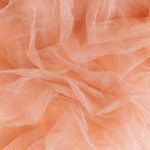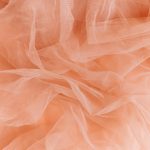When you’re ready to pick fabric for your next sewing project, breathability should be near the top of your list. It affects comfort, especially if you plan to wear your creation in warm or active settings. But with so many options—from natural fibers to high-tech synthetics—knowing what truly allows air to flow can be tricky. Understanding the key factors that influence breathability will help you make a choice you won’t regret.
Table of Contents
Key Takeaways
- Opt for natural fibers like cotton, linen, silk, or wool for superior breathability and comfort in your sewing projects.
- Choose fabrics with loose or open weaves such as gauze or linen to maximize airflow and ventilation.
- For activewear, select synthetic moisture-wicking fabrics that pull sweat away and dry quickly while maintaining breathability.
- Consider fabric texture; smooth textures facilitate air movement, while raised textures create ventilation pockets for enhanced comfort.
- Match fabric choice to the garment’s purpose and climate, balancing breathability with durability and care requirements.
Understanding the Importance of Breathable Fabrics
Why does choosing breathable fabric matter when you sew? The breathable fabric benefits go beyond just style—they directly impact comfort.
When you select the right material, your finished garment allows air to circulate, preventing overheating and moisture buildup. This means you’ll feel fresher and more comfortable throughout the day, especially in warm or active conditions.
Breathable fabrics help regulate body temperature naturally, reducing irritation and sweat accumulation. When you sew with these materials, you’re not only creating something visually appealing but also enhancing wearability.
Breathable fabrics naturally regulate temperature, reducing sweat and irritation for superior comfort and wearability.
Understanding how fabric breathability affects comfort allows you to make smart choices that suit your needs, ensuring your project feels as good as it looks.
Prioritizing breathability is essential for sewing garments that you’ll enjoy wearing every day.
Comparing Natural Fibers for Breathability
When you choose natural fibers for your sewing projects, you benefit from their inherent breathability that synthetic fabrics often lack.
Comparing cotton vs linen reveals distinct advantages: cotton feels soft and absorbs moisture well, making it ideal for everyday wear. Linen, on the other hand, offers superior airflow and dries quickly, perfect for hot climates.
Don’t overlook silk benefits—it’s lightweight and regulates temperature efficiently, keeping you cool or warm as needed.
Here’s a quick look:
- Cotton: soft, moisture-absorbent, breathable
- Linen: highly breathable, quick-drying, durable
- Silk: temperature-regulating, smooth, lightweight
- Wool: breathable yet insulating, good for varied climates
Exploring Synthetic Options With Moisture Management
Although natural fibers offer excellent breathability, synthetic fabrics excel in managing moisture for active or high-performance sewing projects.
When you choose synthetic blends, you tap into moisture wicking technology designed to pull sweat away from your skin, keeping you dry and comfortable. These fabrics often combine polyester, nylon, or spandex to create lightweight, breathable materials that quickly dry and resist odor buildup.
If your project demands durability and moisture control, synthetic options provide a practical solution without sacrificing breathability. Keep in mind, though, they may not be as naturally soft or eco-friendly as cotton or linen.
The Role of Weave and Texture in Fabric Breathability
Because the weave and texture directly influence how air flows through fabric, they play an essential role in breathability. When choosing fabric, you want to evaluate how different weave patterns and texture effects impact airflow and moisture control.
Looser weaves usually allow more air to pass, while tighter weaves restrict it. Texture can either trap heat or promote ventilation depending on its structure. Here’s what to keep in mind:
Looser weaves boost airflow; tighter weaves limit it, while texture influences heat retention or ventilation.
- Open weave patterns like plain or gauze enhance breathability
- Dense twill or satin weaves reduce airflow
- Smooth textures allow air to glide easily
- Raised or nubby textures can create small air pockets for ventilation
Understanding these elements helps you pick fabrics that keep you cool and comfortable in your sewing projects.
Tips for Selecting Fabrics Based on Intended Use
When choosing fabrics, think about how you’ll use your garment to pick the best option.
For casual wear, soft cottons work well, while athletic pieces need moisture-wicking synthetics.
Also, consider the season—lightweight linens keep you cool in summer, and breathable wools offer warmth without overheating in winter.
Casual Wear Fabrics
How do you choose the best fabric for casual wear that keeps you comfortable all day?
When sewing casual dresses or breathable shirts, prioritize fabrics that feel light and airy on your skin. Natural fibers like cotton and linen excel because they allow air to circulate, preventing overheating.
Consider these options for your next project:
- Cotton poplin for crisp, breathable casual dresses
- Linen blends that soften with each wash
- Lightweight chambray for relaxed, airy shirts
- Rayon fabrics that drape well and wick moisture
Athletic Use Options
Although comfort remains key, choosing fabrics for athletic wear demands extra attention to performance features like moisture-wicking and stretch.
When selecting materials, prioritize moisture wicking technologies that pull sweat away from your skin, keeping you dry and comfortable during workouts.
Look for fabrics with built-in performance enhancing features such as four-way stretch to allow unrestricted movement and durability to withstand frequent washing.
Synthetic blends like polyester and nylon often excel here, but don’t overlook lightweight mesh panels for added ventilation.
Avoid heavy or non-breathable fabrics that trap heat and moisture, which can cause discomfort and irritation.
Seasonal Fabric Choices
Since your clothing needs change with the seasons, selecting the right fabric is essential for comfort and functionality.
When choosing breathable materials, consider how summer fabrics and winter fabrics differ in their ability to regulate temperature and moisture.
For warm months, opt for lightweight, airy fabrics like:
- Cotton and linen for excellent ventilation
- Rayon blends that wick sweat effectively
In colder seasons, winter fabrics should keep you warm while still allowing breathability:
- Wool and flannel provide insulation without trapping moisture
- Brushed cotton offers softness and warmth with airflow
Sustainability and Care Considerations for Breathable Fabrics
Choosing breathable fabrics also means paying attention to their sustainability and care. When selecting materials, look for those with sustainable sourcing to reduce environmental impact. Fabrics made from organic cotton, bamboo, or hemp often meet these criteria.
Additionally, eco friendly finishes enhance breathability without harmful chemicals, keeping your project green and safe. Caring for these fabrics properly guarantees they last longer and maintain their breathable qualities.
Use gentle detergents, avoid high heat when washing or drying, and air dry whenever possible to preserve fabric integrity. By choosing sustainably sourced fabrics with eco friendly finishes and following mindful care practices, you’ll create breathable garments that not only feel great but also support a healthier planet.
Frequently Asked Questions
Can Breathable Fabrics Be Combined With Waterproof Materials?
You can definitely combine breathable fabrics with waterproof materials by using breathable composites. These materials allow moisture to escape while keeping water out. Just focus on waterproof layering techniques to balance comfort and protection in your project.
How Do Fabric Finishes Affect Breathability?
Like a magician’s touch, fabric treatments can transform breathability by enhancing moisture management. When you choose finishes wisely, you’ll keep fabrics airy yet functional, balancing comfort and performance in every stitch you create.
Are There Breathable Fabrics Suitable for Cold Weather?
You’ll find breathable insulation in cold weather fabrics like merino wool and technical synthetics. They let moisture escape while keeping you warm, so you won’t feel clammy or overheated during chilly outdoor activities.
What Sewing Techniques Preserve Fabric Breathability?
You don’t want to smother your fabric like it’s wearing a spacesuit! Choose sewing methods like flat-felled seams and airy pattern choices—these keep breathability alive so your project feels like a gentle breeze, not a sauna.
How Does Fabric Color Impact Breathability?
Fabric color can affect breathability because dark dyes may clog fabric weave pores, reducing airflow. When you pick a color, consider how the dye impact interacts with the fabric weave to keep your project breathable and comfortable.
- Abaca vs. Hemp Fibers: A Head-to-Head Comparison for 2024 - June 25, 2025
- The History of Abaca Fiber: The Pride of the Philippines - June 25, 2025
- Abaca Fiber Characteristics: What Makes This Natural Fiber So Unique? - June 25, 2025







